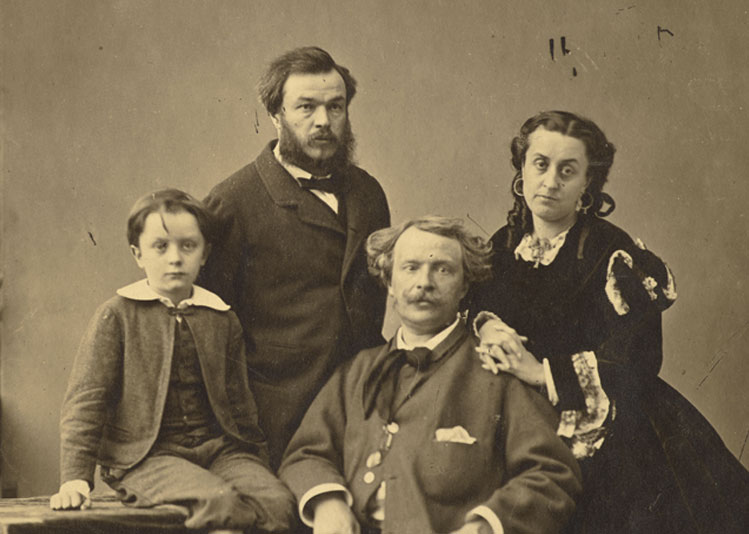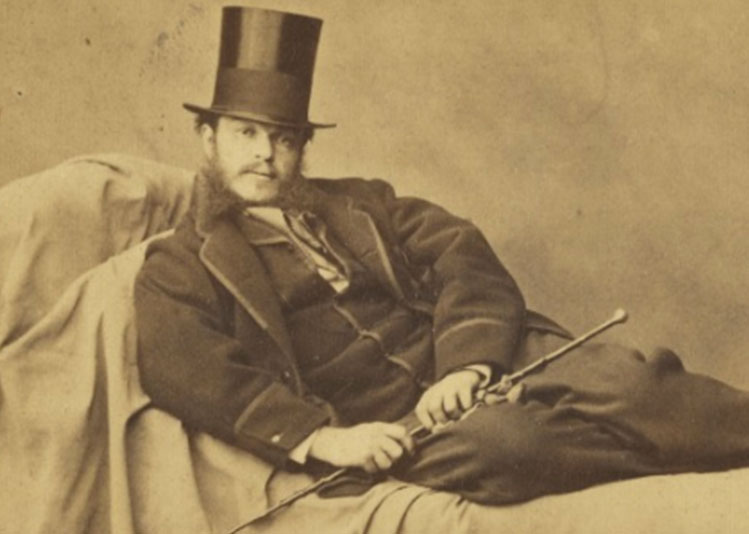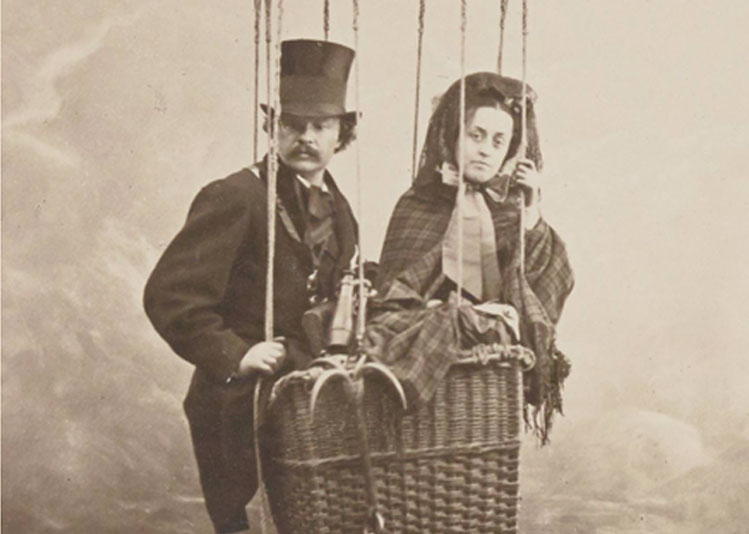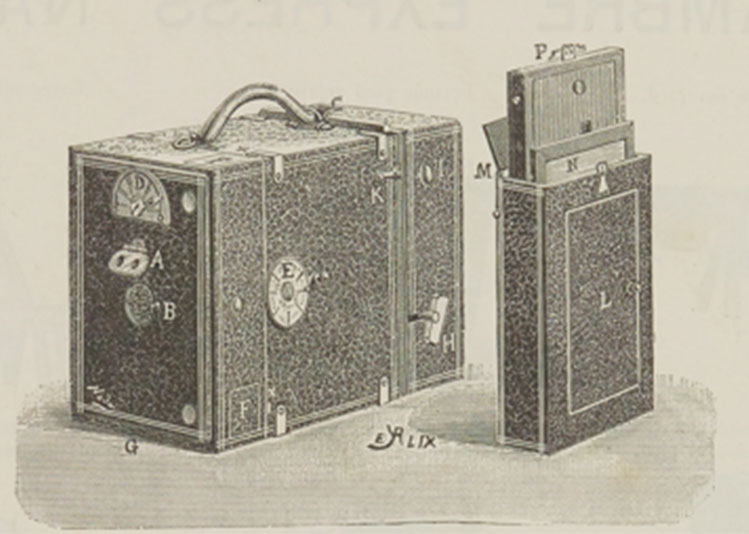The Nadars, a photographic legend
The Nadars: a clan that lived and breathed photography from the dawn of the technique’s modern era to the early 20th century. The brilliant and flamboyant Félix, flanked by his brother Adrien, a bohemian artist and inspired photographer; and his son Paul, a modern businessman and promoter of Kodak in France.
-
![]()
Adrien Tournachon, Félix Nadar’s younger brother, was a laid-back artist, the very archetype of the bohemian. Pouring his talent and artistry into photography in the early 1850s, he brought great cachet to the emerging art form.
-
![]()
“One day someone introduced you to him, he embraced you immediately; the next, he would be speaking to you most familiarly; the third, he would take your portrait, as well as your wife’s and your children’s – for free, just for the the pleasure of being agreeable. And that is how you wind up with a set of magnificent photographs – how every well-known man in Paris, from Victor Hugo, who is somewhat well-known, to Fattet, who is extremely so, possesses his very own portrait by Nadar.”
Philipon, Director of the Journal amusant
-
![]()
Unlike his uncle and father, Paul was the only Nadar who would devote himself exclusively to photography. Paul inherited the name Nadar and would do his best to emancipate himself from it. When he took over the task of running the studio, his goal was to turn it into a modern business. The younger man would find it difficult to live up to his father’s reputation or to leave his own name on the next stage of the family business’s history.
The Art of the Portrait
From the painter’s studio to the photographer’s, from engravers’ copper plaques to photographic plates, light and shadow are always the key. The Nadars stand out for their exceptional photographic acuity, their search for an “intimate resemblance,” or, as it would be called later, “the true image.” These portraits contributed to revealing photography’s authentically artistic dimension.
Find out more about the Nadars’ portraits

Félix Nadar’s portrait of Bakunin in one of the photographer’s favorite poses



“Everyone was always welcome at the Nadars. In their home, Alexandre Dumas père rubbed shoulders with Jacques Offenbach, Victorien Sardou mixed with Gustave Doré, and the distinguished actors of the Comédie Française troupe mingled with Henri Rochefort.”
Bohemian Life and Small Newspapers
Bohemians was the name given to a category of impoverished young artists looking for a place in the era’s strictly stratified society. They were able to seize the opportunities offered by a turbulent century. Félix and Adrien got their start at a time when “newspaper culture” was developing. The multiplication of titles offering an outlet for illustrations and sketches opened up a vast field that they were able to take advantage of. For them as well as for others, caricature – an art of the gaze – led them to the practice of photography.
See the portrait gallery

“Natural light was indispensable for photography before the advent of artificial light and more sensitive processes. The first Nadar studios included outdoor areas: a roof-top terrace for Adrien and a ground-floor garden with a glass-roofed atrium for Félix. On the upper floors, huge windows allowed him to take advantage of as much light as possible.”

Eyewitnesses to the Transformations of the 19th Century
An important period for advertising, the press, and the world of finance, the 19th century was attached first and foremost to the spectacle of itself. It loved to see its own reflection in light comedy, World’s Fairs, military reviews and carnivals. The Nadars contributed to that social inventory in which the vainglorious rubbed shoulders with the glorious, and “marble” busts with “plaster”. From caricatures, which exposed the workings of social farce through humor, to photography, which often formalized it, the Nadars always strove to delve behind the social masquerade to find the truth that faces contained.
Explore the uses of photographyInnovation at the Heart of their Work
Entrepreneurship was one of the guiding principles of the 19th century. Whether the goal was wealth or power, conquering nature through science, or achieving the best possible world by fomenting revolution or inventing utopia, the Nadars participated fully in the ideas of their time. While others headed off to search for gold, the Nadars were photographic pioneers, searching for light and exploring what could be done with it. Félix also struggled against the burden of gravity, both Newton’s, through his “heavier than air” campaign and his Le Géant balloon, but also more metaphorically, against the burden of the conservatism of the powers that be, through his never-ending passion for free-thinking and his unstinting generosity towards those who had been “crushed by life.”
Exploring Underground Paris

“Artificial light, aerostatic photography, plotting topographic maps and strategic military operations, etc.; the Nadars were at the root of numerous patent applications, not all of which were crowned with success.”

With his “Society for the Encouragement of Aerial Locomotion via Heavier than Air Craft,” founded in 1863, Félix Nadar was seen as a pioneer in the history of aviation. Although his 45-meter- (148-foot-) tall hot-air balloon, Le Géant, was a failure as a commercial endeavor, he soon came up with the idea of pairing photography with aerial navigation.
Discover the Nadar: the game
Joséphine Baker
Victor Hugo
Sarah Bernhardt
George Sand
Honoré de Balzac
Gustave Doré
Félix Nadar
Un acrobate
Gérard de Nerval
Les frères Nadar
Maryse Bastié
Alexandre Dumas
Thérèse Maillet
Ernestine Nadar
Charles Baudelaire
Théophile Gautier
Paul Nadar
Un cavalier arabe
Honoré Daumier
Les frères Goncourt
Joséphine Baker or Maryse Bastié
Swipe the picture right or left to answer
Victor Hugo or Alexandre Dumas
Swipe the picture right or left to answer
Sarah Bernhardt or Thérèse Maillet
Swipe the picture right or left to answer
George Sand or Ernestine Nadar
Swipe the picture right or left to answer
Honoré de Balzac or Charles Baudelaire
Swipe the picture right or left to answer
Gustave Doré or Théophile Gautier
Swipe the picture right or left to answer
Félix Nadar or Paul Nadar
Swipe the picture right or left to answer
An acrobat or an Arab rider
Swipe the picture right or left to answer
Gérard de Nerval or Honoré Daumier
Swipe the picture right or left to answer
The Nadar brothers or the Goncourt brothers
Swipe the picture right or left to answer
Bravo!
It’s Joséphine Baker, portrayed by Paul Nadar, around 1930
Too bad!
It was Josephine Baker, portrayed by Paul Nadar, around 1930
Bravo!
It's Alexandre Dumas, portrayed by Félix Nadar, around 1855
Too bad!
It was Alexandre Dumas, portrayed by Félix Nadar, around 1855
Bravo!
It's Sarah Bernhardt, wrapped in a white scarf, portrayed by Félix Nadar around 1864
Too bad!
It was Sarah Bernhardt, wrapped in a white scarf, portrayed by Félix Nadar around 1864
Bravo!
It's George Sand, portrayed by Félix Nadar, around 1864
Too bad!
It was George Sand portrayed by Félix Nadar, around 1864
Bravo!
It's Charles Baudelaire, portrayed by Félix Nadar, around 1862
Too bad!
It was Charles Baudelaire portrayed by Félix Nadar, around 1862
Bravo!
It's Gustave Doré, portrayed by Adrien Tournachon around 1854-1855
Too bad!
It was Gustave Doré, portrayed by Adrien Tournachon, around 1854-1855
Bravo!
It is a self-portrait of Félix Nadar, around 1853
Too bad!
It was a self-portrait of Félix Nadar, around 1853
Bravo!
It is an Arabian rider, portrayed by Adrien Tournachon, around 1856
Too bad!
It was an Arabian rider, portrayed by Adrien Tournachon, around 1856
Bravo!
It's Gerard de Nerval, portrayed by Adrien Tournachon, around 1855
Too bad!
It was Gerard de Nerval, portrayed by Adrien Tournachon, around 1855
Bravo!
It is the Goncourt brothers, portrayed by Adrien Tournachon, around 1854-1855
Too bad!
It was the Goncourt brothers, portrayed by Adrien Tournachon, around 1854-1855
Congratulations!
You have now acquired a certain knowledge of the Nadars brother's work, congratulations!
You can do better...
You still have a little work to do but we are sure you can make it!
delve into a century of photography...






